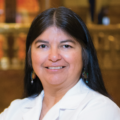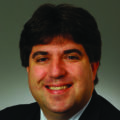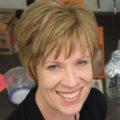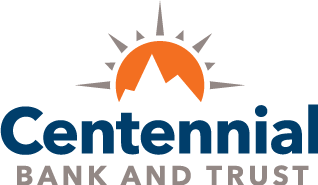2016
Standing Together—Health Care for Our Common Good
The 7th annual symposium, “Standing Together—Health Care for Our Common Good,” included topics on health care accessibility, human gene therapy, primary care in today’s world, drug research and development, the social behavior of bees, and the power of generosity. Presentations were made by health care innovators, medical researchers, scientists, and thought leaders.
View Program
View interview with Bryce Widom about creation of symposium artwork.
-
Symposium Welcome
-
2016 Symposium Welcome
Today I will discuss two transformative events that reflect the goals we have had since we started these symposia.
First, after working each year to adjust the balance between hard science (with lots of omics) and the social sciences (which are also hard), we may have finally found the mix that feels right for what we are trying to do...
-
-
Accessing Better Health Care Through Legislation, Science, and Nature
-
Amendment 69: ColoradoCare? Yes!
Despite repeated Supreme Court challenges and efforts by Congress to repeal it, the Patient Protection and Affordable Care Act (ACA) is into its sixth year of existence. Efforts to undermine its financial sustainability continue; but in the end, which elected representatives will choose to remove guaranteed access to health care from Americans with pre-existing conditions?
We in...
-
The Unrealized Value to Society of Understanding Down Syndrome
If we can’t cure Down syndrome, why, then, is research into this complex and highly variable syndrome worth pursuing? I will argue that people with Down syndrome are an underappreciated gift to biomedical science and to society. As a group, they are prone to autoimmune diseases, autism, Alzheimer’s disease, childhood leukemia, heart malformations, and several other maladies. However, even though...
-
Me to We: Searching for the Genetic Roots of Sociality
True societies are very rare in biology, but have evolved repeatedly in a group of insects that include the ants, bees, and wasps, with the honey bee widely considered a paragon of sociality. In this lecture, I will use the honey bee and related bee species to demonstrate how the new science of genomics enables the study of social life...
-
Nature as Medicine
For millennia, humans have turned to nature for medicines to treat a host of ailments, and the search continues today. It is estimated that nearly half of the pharmaceuticals now in use are derived from plants, animals, fungi, or microbes for conditions ranging from headaches and hypertension to malaria and cancer. Researchers are actively seeking medically-useful compounds in the world’s...
-
-
Social and Biological Stressors, Information Transfer, and Generosity
-
The Unmentionables: Is “Life” the Missing Link?
Most of us toiling away in the health industry feel enormously driven to improve the health of society…and yet, with all the best intentions, there remains a gaping yaw between the health we seek for humans and the health reality we experience. Often that goes not just for those we seek to impact, but for ourselves as well. Why?
-
Everyone Knows About Alcohol–But What Do We Really Know?
Alcohol is an “addictive” drug, but its use is condoned by government, and it is used by many individuals who enjoy social drinking and never become dependent on it. However, about 7 percent of alcohol drinkers 18 years of age and older in the U.S. develop what is now called Alcohol Use Disorder (AUD). In addition, many men and women...
-
A Solid State Conceptualization of Information Transfer from Gene to Message to Protein
Most DNA and RNA regulatory proteins consist of two parts. One part enables direct recognition of DNA or RNA, is well folded, and is represented by canonical domains including zinc fingers, homeoboxes, leucine zippers, RNA recognition motifs, KH domains, and pumilio domains. The other part is typified by poorly folded, low-complexity sequences whose mechanistic basis of function has long been...
-
Generosity Becomes You
There are more than enough resources—money, networks, time, creativity, life experiences—to be mobilized in support of all of the important work to be done in the world. We simply block them through various obstacles, like our relationship with money, power dynamics, and fear that the problems are too big. In this presentation, we'll identify and unpack the various obstacles and...
-
-
Human Complexities—Our Genes, Gender, and Biology
-
Women and Technology Innovation
Technology innovation is changing the world in a wide variety of ways—smart homes, smart cars, smart health, smart education, smart cities, and so much more. Computing is a field unique in its societal impact, as computational advances impact everything from scientific discovery to energy, war, and security.
Despite women’s early participation in computing, the expansion of women’s career...
-
Chance, Genetics, and the Heterogeneity of Autoimmunity and Disease Pathogenesis in Systemic Lupus Erythematosus
Phylogenetic and ontogenetic evolution combine to maximize the potential for the immune system to detect and eliminate pathogens at risk for initiating potentially damaging immune reactions including self-reactivity and autoimmune disease. Innate immune receptors have limited diversity and detect molecules whose expression is exclusive or at least more prevalent among pathogens, for example lipopolysaccharide and DNA with non-methylated CpG, respectively....
-
Clinical Proteomics for Diagnostics and Precision Medicine: Applications in the Post-Genome Era
While DNA is the information archive, the proteins do the work of the cell and constitute most of the cellular machinery. Functionally, nearly all of the FDA-approved drugs work by modulating protein expression and/or protein activity/location. Moreover, many of the biomarkers that are measured in the clinic for routine disease detection to more esoteric testing are proteins. This backdrop provides...
-
A Tour of the Human Genome
There is a surprising amount of controversy about the contents of the human genome: junk DNA, pervasive RNA transcription, the role of long noncoding RNAs, and whether 20,000 protein-coding genes suffice to account for the complexity of our biology. Popular accounts often refer to "dark matter,” the idea that only one percent of the genome codes for proteins, the vast...
-
-
Ironies and Challenges of Medical Research and Patient Care
-
“Damn the Compass, Full Speed Ahead”: Why Quality Beats Quantity in Drug R&D
Why has drug discovery become less efficient as the technologies that most people think are important have improved spectacularly? DNA sequencing is perhaps ten billion times faster now than it was in the 1970s. A single chemist today may make 1,000 times more molecules to test than they could in the early 1980s. X-ray crystallography is perhaps ten thousand times...
-
Targeted Nucleases—Human Gene Therapy 2.0?
Targeted nucleases, which include zinc finger nucleases and CRIPSR/Cas9, are poised to revolutionize gene therapy by potentially offering safer and more precise methods to engineer human genes. Although several different nuclease platforms are available, they all act in the same way, by first introducing a DNA break at a specific targeted sequence. Subsequent repair of the break by host cell...
-
Primary Care for the Twenty-First Century
At the 2010 GoldLab Symposium, I discussed the challenges facing medical care systems as they try to build physician-centric primary care systems. Shortages of trained physicians force a rethinking of traditional solutions. Emerging technologies provide a host of new ways to respond.
In this presentation, I will reprise these arguments briefly and discuss the most promising technological advances, then present an alternative model...
-
Dispatches from the Frontiers of Modern Medicine
When my first husband Stephen was born with cystic fibrosis in 1968, the average life expectancy for a person with his illness was 10 years. By the time I met him at age 17, the average life expectancy had doubled. In 1986, the first successful double-lung transplant was performed, radically altering the possible life course for CF patients. In 1989,...
-
-
Closing Remarks
Moderators






































